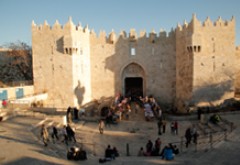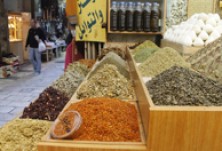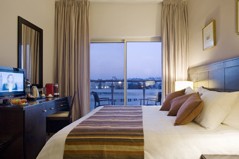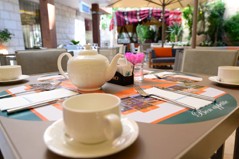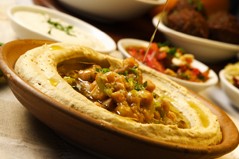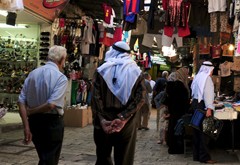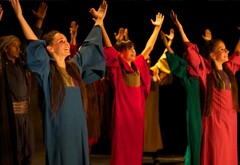It is sometimes difficult for many locals to visit the courtyard of al-Buraq Wall (the Western Wall or Wailing Wall) due to the extensive security measures. This could be avoided by heading towards the lookout of al-Buraq Wall. This is accessed by exiting al-Aqsa Mosque through Bab al-Silsila and walking westwards on the Bab al-Silsila street until the second intersection is reached, on the southern side of the Bab al-Silsila road, known as Harat al-Sharaf Road (Habad Road), where there is an open area that leads through a staircase at its southeastern end to the lookout, which offers the opportunity to see al-Buraq Wall and a general view of al-Aqsa Mosque with all its buildings and structures. It also shows the southwestern angle of the mosque and provides an opportunity to see the excavations that surround the western and southern parts of al-Aqsa Mosque wall, in addition to a view of the Mount of Olives.
Historical Background
The viewer must keep in mind that the open area in front of al-Buraq Wall used to be packed with residents and Arab Islamic buildings that belong to the Waqf (religious endowment) of abi Madian al-Ghawth, which was established in the Ayyubid era. These buildings and structures were demolished by the Israeli authorities after 1967.
Al-Buraq Wall
Al-Buraq Wall is part of the western wall of al-Aqsa Mosque in the Old City of Jerusalem. This part of the wall acquired its name from the steed, the winged horse,that carried Prophet Muhammad on the miracle al-Isra and al-Mi’raj journey from Mecca to Jerusalem. The stories on the life of the Prophet indicate that he tied the steed near this part of the wall when he visited the area of al-Aqsa Mosque and ascended to heaven.
The Negative Aspect of Expanding al-Buraq Wall
The expansion of the area in front of al-Buraq Wall by destroying the Harat al-Maghariba, which dates back to the Ayyubid and Mamluk eras, has done extensive damage and harm to the rights of the Arabs and Muslims and the city’s architectural heritage. It has left a negative impact on the visitors of the site of al-Buraq Wall. While the visitor to the wall in 1967 used to pass through alleyways and passageways leading to the sight of a great, high wall made up of exceptional courses, the visitor nowadays faces a courtyard that has more than one wall and is not able to determine which one is al-Buraq Wall. An international committee formed after the 1929 events concluded that al-Buraq Wall is of purely Arab Islamic ownership and the occupation of this part and changes made to it do not nullify the right to this ownership.

